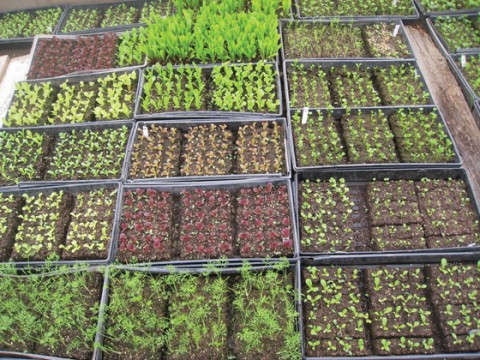Seeding time: Notes from the farm

Seeds are coming in the mail each day—seemingly blown in on the strong spring winds. Sometimes a large box arrives, usually from Fedco or Johnny’s Selected Seeds, with scores of seed packets for my brother’s vegetable farm. Sometimes a manilla envelope arrives with only a few packages from a specialized seed company such as High Mowing Seeds, Kitazawa Seed Company or Seeds of Italy.
The Italian seed packets proudly proclaim their parentage: Franchi Sementi, the oldest family-owned seed company in Italy, founded in 1783. The art on the big bright packets shows what the seeds will become: a new variety of San Marzano-style paste tomatoes, big fat storage carrots and candy-striped Chioggia beets.
The tomato seeds are small, slightly fuzzy, papery flakes, as insubstantial as confetti. These are the seeds you slurp down by the hundreds when you eat a big ripe tomato. But now each one is about to be launched on a journey that will result, if all goes well, in a sturdy plant whose roots go four to six feet down, and whose stems climb just as high skyward, producing from 20 to 100 pounds of tomatoes over the season.




